Recent Water Damage Posts
What homeowners should know about flood insurance in North Carolina
6/5/2023 (Permalink)
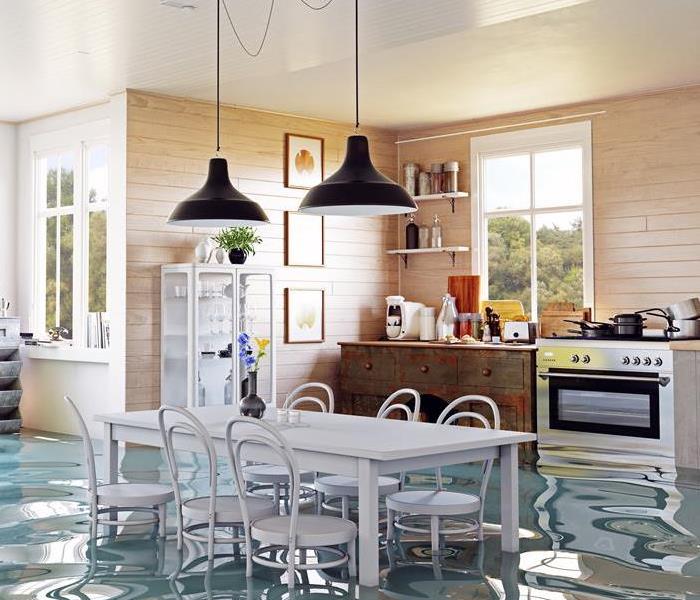 Does your home insurance cover Water Damage?
Does your home insurance cover Water Damage?
Are you Covered?
Am I Covered? The first question homeowners or renters ask themselves after suffering water damage - whether it’s flooding caused by a significant storm or brought on by firefighting efforts. And following a disaster or emergency, the insurance claims process can add more stress to an already overwhelming situation.
Fortunately, there’s a local resource to restore your home and help you navigate the insurance process: SERVPRO of NW Charlotte, Lincoln County, Southern and NE Gaston County. No property damage restoration project is too large for our highly trained and certified professionals, and we’re a preferred vendor for many insurance companies.
Adjusters understand SERVPRO’s goal is to provide customers with the best service (and peace of mind!) possible as we all work together. Our professionals provide 24-hour emergency response, quickly identify and mitigate damage, assess the loss, restore the damage, and develop a thorough electronic case file for customers and adjusters.
However, long before a disaster or emergency strikes, homeowners should understand the ins and out of their insurance policies so there are no surprises about what is - and what’s not - covered. Below are some North Carolina Department of Insurance responses to seven commonly asked questions about flood insurance.
1. Does my policy cover flood damage to my home and its contents?
Unfortunately, homeowner, renter, and tenant policies specifically exclude coverage for water damage due to flood, which is considered an “excluded peril.” Homeowners may purchase a separate flood insurance policy through the federal government. Note: Flood insurance isn’t just for properties in particular flood hazard areas; nearly 30 percent of flood insurance claims are for properties outside floodplains.
2. What is the National Flood Insurance Program (NFIP)?
In 1968, the federal government established NFIP. The Federal Insurance Administration, which is part of the Federal Emergency Management Agency, administers the program. NFIP makes flood insurance available to property owners in communities that help reduce further flood losses by adopting and enforcing floodplain management ordinances. Property owners must be within a city, township, or county participating in the NFIP by enforcing floodplain management standards. You only need to live in a participating jurisdiction - not in a flood plain - to be eligible to purchase flood insurance.
3. Am I covered for sewage backup in my basement if I added an endorsement to my homeowner’s policy?
Standard homeowner policies don’t cover water damage due to backup of sewer or sump pump; however, many companies will sell this coverage through a separate endorsement or addition to the basic policy.
4. If there’s seepage in my basement, do I have water damage coverage for the contents?
Standard homeowner policies don’t cover water damage caused by seepage through basement walls or floors, and there isn’t an endorsement available for this type of water exposure.
5. If I purchased special coverage for some of my personal property and then added it to my homeowner’s policy, are those items covered for flood?
Personal property items you can schedule for coverage in an endorsement to a standard homeowner or tenant policy include Jewelry, computers, cameras, musical instruments, silverware, golf equipment, fine arts, postage stamps, and rare collectibles.
6. Is there coverage for the fire damage on my flooded property?
Standard homeowner policies exclude flood as a covered cause of loss; however, it gives back coverage for fire, explosion, and theft in the event of a flood.
7. Receding flood waters left debris all over my property. Is debris removal covered?
Standard homeowner policies provide a certain amount for debris removal, but only if covered peril causes the loss. Since flood is not a covered peril, there would be no coverage.
Water damage cleanup and restoration
SERVPRO is locally owned and operated and is part of the Mecklenburg, Lincoln and Gaston communities. Our water damage repair and restoration technicians are employees, not contractors. They use advanced water damage inspection and extraction equipment to find and remove moisture quickly. To learn more, call us anytime at (704) 393-7890 or request help online.
Is Your Home Winter Ready?
1/11/2023 (Permalink)
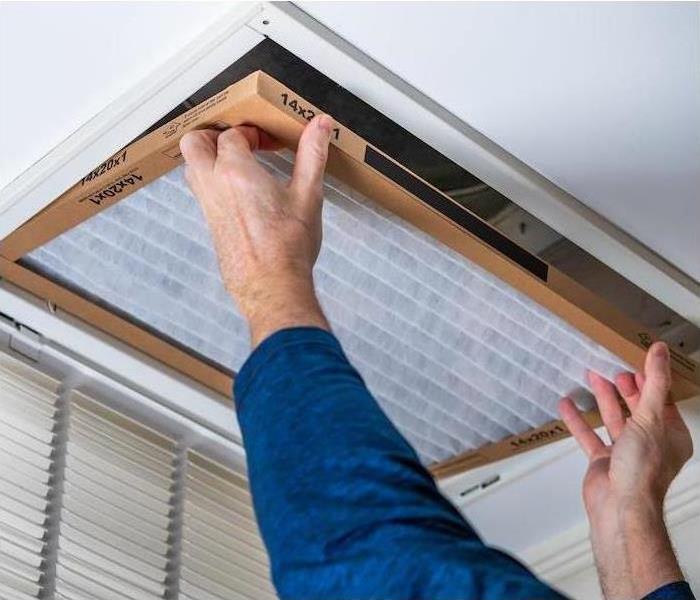 Get Your Home Winter Ready
Get Your Home Winter Ready
For those who live in the Charlotte area where weather events are typically mild, winter isn’t a season as much as it is a time for celebration. But friendly forecasts aside, as we move into the coldest months of the year, the city will still get its fair share of precipitation - whether it’s rain, snow, sleet or hail.
We’ll also experience a fluctuation in temperatures and an increase in days that dip into the low 30s and even below freezing - making it critical to get your home winter-ready. After a snow or ice storm, our restoration specialists see the aftermath firsthand: water damage caused by a burst pipe, gaping roof holes from falling trees, mold infestations in fireplaces, and smoke damage from a Christmas tree that went up in flames.
With so many North Carolinians spending more time at home than ever, we want to help you and family stay safe and warm, as well as protect your home from damage (both inside and out) all winter long. Just as Santa knows well the value of making a list and checking it twice, so should homeowners. The time to start winterizing is now - before the first storm or harsh weather event hits. Fortunately, you can DIY most of these home protection recommendations.
Indoor winterization tips
- Use pipe foam to insulate your pipes, especially those warm to the touch.
- Check and repair any attic, garage or shed leaks.
- Seal any water pipe or hose leaks.
- Be sure the temperature hot water tank is set safely, and clean your dryer vents.
- Seal the top of your fireplace if you don’t plan to use it during the winter.
- Change the batteries on any smoke and carbon monoxide detectors and make sure the equipment is working correctly.
- Replace filters throughout your house and open heating system vents.
- Flush your water heater to let any sediment run out.
- Install window insulation film and weather-stripping tape around doors and windows. For a quick fix, use a rolled-up towel or blanket to keep under door drafts at bay.
Outdoor winterization tips
- Clean your downspouts and gutters of any debris, twigs, leaves, nuts or rocks so ice can’t build up and clog them.
- Trim tree limbs around your home. When weighed down from wet snow or an ice storm, they can break or fall, causing damage to your roof, home, car or fence.
- Fill any siding and window cracks or gaps with caulk.
- Take out any window AC units and remove any debris, branches or leaves around your air conditioner condenser.
- Drain and disconnect hoses and turn off your sprinklers. If your pipes aren’t frost-proof, turn off the water valve by the spigot.
- Move outdoor furniture, grills and propane tanks away from the elements, or wrap them in tarps and bungee cords to keep them secure outside.
- Remove any moss or vegetation from your roof.
24/7 water damage and restoration assistance
American travel writer Paul Theroux said, “Winter is a season of recovery and preparation.” Unfortunately, sometimes preparedness is still no match for Mother Nature’s wrath or other cleaning or restoration emergencies. If that happens, you can rest assured our team is just a phone call away.
Although SERVPRO of NW Charlotte, Lincoln County, Southern and NE Gaston is part of a national network of 1,700-plus franchises, we’re locally owned and operated and part of the Mecklenburg, Lincoln, and Gaston communities. Our water damage and restoration experts are employees, not contractors, which means our team can respond faster to emergencies with a proven water damage restoration process and the most advanced technology and equipment. For questions, contact us anytime at (704) 393-7890 or request help online.
Flood Damage and Water: What's the Difference?
5/31/2022 (Permalink)
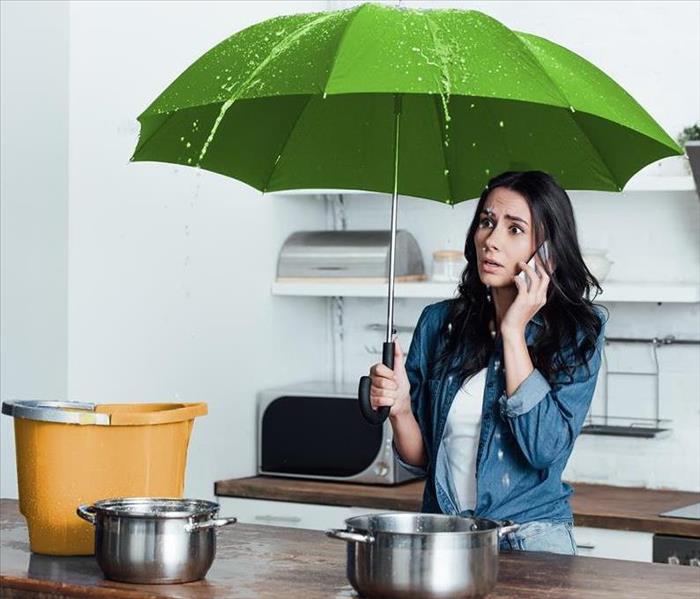 Woman in Charlotte NC home who is calling Water Damage Restoration Company.
Woman in Charlotte NC home who is calling Water Damage Restoration Company.
Is it Flood Damage or Water Damage?
Mitigation and restoration after water damage occurs is not the only piece of the water damage puzzle. When water causes damage, an insurance claim should be made as soon as possible.
Filing an insurance claim because of water damage can be complicated. The first step is knowing the difference between a flood damage claim and water damage. This information is crucial to the homeowner because it determines what is covered and what is not.
The distinction between a flood damage claim and a water damage claim is best be defined by (FEMA) the Federal Emergency Management Agency’s flood definition. According to FEMA, a flood is a general and temporary condition of partial or complete inundation of two or more acres and two or more properties of normally dry land.
To make it simple, if the water that caused the damage occurred from a natural source and any neighbors are experiencing the same water issues, its generally flood damage. According to FEMA, flood damage can only be caused by overflow of inland or tidal waters, unusual and rapid accumulation or runoff of surface waters from any source, mudflow, or collapse of land along the shore of a lake or similar body of water as a result of erosion or undermining caused by waves or currents of water exceeding anticipated cyclical levels that result in a flood.
If a flood has caused damage to your home, it is important to know if you currently have flood insurance through the National Flood Insurance Program, because home insurance companies do not offer coverage on flood damage. Having flood insurance is extremely beneficial to homeowners who think they might even have the slightest chance of being affected by a flood. The official site of the National Flood Insurance Program states that flood insurance policies cover physical damage to your property and possessions.
Everything from the actual building and its foundation to the refrigerator and the food inside of it is covered by flood insurance and will be taken into consideration when claims are filed. Flood insurance does cover basements and areas below the lowest elevated floor, but it depends on the flood zone and the date of construction. It is important to remember that flood insurance does not cover the sentimental value of any property, so be sure to remove any precious items such as photos, documents, or personal items that cannot be replaced as quickly as possible.
When water damage occurs in your home, did not originate from a natural source, and is not affecting any surrounding buildings, a water damage claim is necessary. Circumstances such as broken toilets, overflowing bathtubs, broken pipes, and b burst water mains are all grounds for water damage claims that should be filed by contacting your homeowners insurance company.
Working through the process of filing both a water damage claim and a flood damage claim can be confusing, and seem overwhelming.
If water damage does occur, SERVPRO of NW Charlotte can clean and restore your home to make it "Like it never even happened." Call us 24/7.
Home Water Damage typically starts in the Bathroom
5/31/2022 (Permalink)
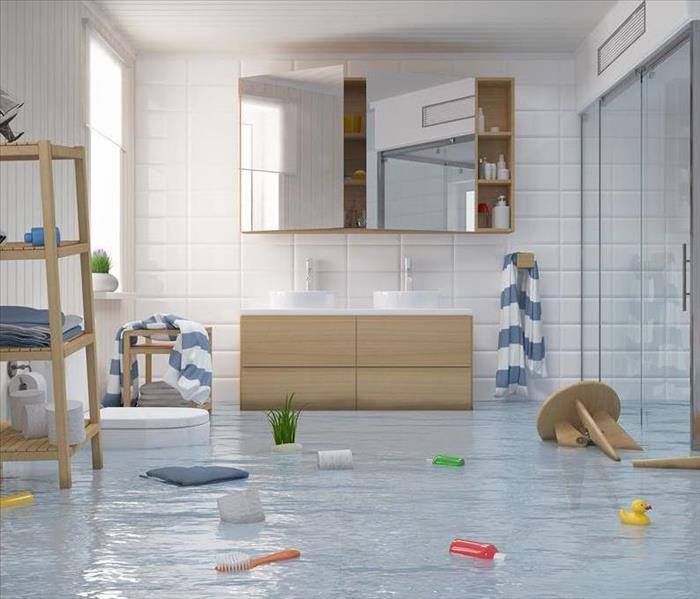 Bathroom Water Damage
Bathroom Water Damage
Many instances of the flooding and other water damage experienced in homes start in the bathroom. Bathrooms are a common source of water damage which can be created by overflowing toilets, overflowing sinks, under sink pipe bursts, overflowing bathtubs or water pipe leaks underneath the flooring. SERVPRO of NW Charlotte has water restoration specialists to help recover from the water damage caused by any issue in your bathroom.
Finding the Source of Water Damage
While an overflowing bathtub or toilet is never expected. Home owners are usually immediately aware when the water damage happens, unless they aren away at the time of the flood. Sometimes leaks can happen behind the walls of bathrooms that can go on for days, weeks or even months without being identified until the damage is significant. Water damage in bathrooms can cause considerable damage and mold growth. Visible issues can even go undetected if the owner is away from the home for a significant amount of time. In some cases, an unexpectedly high water bill can alert a homeowner something is wrong. Bathroom water damage of any type needs immediate professional attention.
What to Do After Your Bathroom Floods
While you’re waiting for water damage mitigation company to arrive, here are a few water damage tips:
- Remove excess water by mopping and blotting.
- Wipe excess water from furniture after removal of tabletop items and lamps.
- Remove and prop up wet cushions and upholstery.
- Remove wet area rugs..
- Turn air conditioning on for maximum drying in summer.
- Remove colored rugs from wet carpeting.
- Remove important objects to a safe, dry area.
What Happens When Water Damage Specialists Arrive
When the a water mitigation company arrives, they get to work to immediately assess the damage. They’ll inspect the damage and make an assessment in order to rectify the situation. Next, they’ll use advanced equipment to extract the water using pumps and vacuum units to rapidly remove water from your bathroom and surrounding impacted areas, which helps prevent further water damage and mold growth.
Then comes drying and dehumidification to help prevent odors and mold from growing.
Next, they’ll clean all the restorable items and structures damaged by the water as well as sanitizing treatments to remove odors and deodorize your property.
Finally, there’s restoration - restoring your home to its pre-damage condition. Restoration might include minor repairs like replacing drywall, tile floor repair, painting, or installing new baseboards in your bathroom. More significant repairs may include tarping, boarding up, packing, and moving, or other repairs.
SERVPRO of NW Charlotte can simplify the restoration process by handling the initial water damage mitigation and rebuilding the affected areas that will bring a building back to full functionality.
Bathrooms are a common area when it comes to water damage and flooding but choosing the best water damage restoration company can make the recovery process easier.
Contact us at (704) 393-7890to get your water damage handled quickly and professionally.
How to Locate your Home Water Shut Off Valve
5/31/2022 (Permalink)
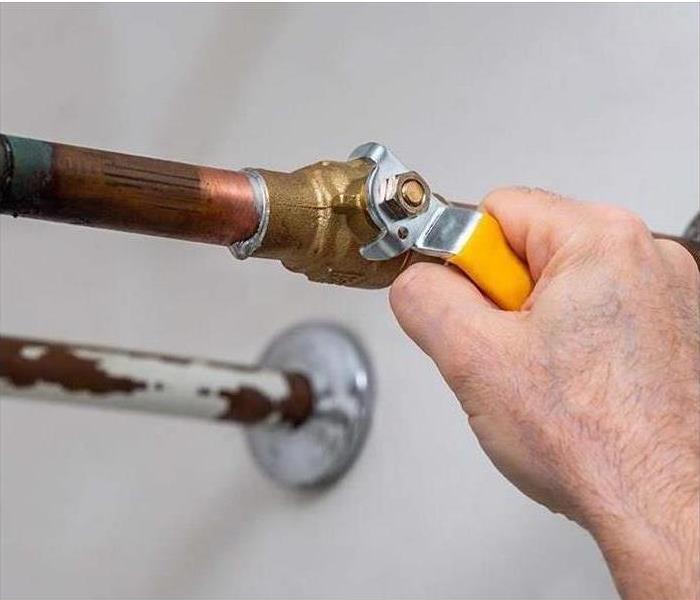 Man adjusting home water value shutoff.
Man adjusting home water value shutoff.
If the leak is from a sink or a toilet, it is easy to turn off the water for that line by turning the valve that is located beneath or beside the fixture.
What if you're not sure where the leak is coming from? It could be a pipe behind your wall, under your home, or somewhere that is hard to locate. In this case, you should turn off the water to the whole house. This means locating the water main shutoff.
Do you know where the shutoff is located and could you locate it in the case of an emergency? If not, don't feel bad. Many people do not know where to locate their water and gas shut offs.
Typically, these shut offs lie on the exterior of the home around the perimeter of the building. Once you have found the shut off, make sure that all members of your household know where it is. This is exactly why we tag these main shut offs during the creation of an ERP. The quicker you are able to turn off the water, the less damage is caused.
Once located, you can add water and gas shut off tags to the appropriate shut offs. You can add these tags as a helpful reminder if you ever have an emergency in your home. For example, if a leak happens or a pipe bursts in your home, the first thought to cross your mind should be to turn off the water.
Next step? Call SERVPRO of NW Charlotte.
If you experience water damage in your home, whether from a busted pipe, leaky roof, or natural occurrence, call SERVPRO of NW Charlotte at (704) 393-7890.
We are here to help 24/7.
Why Do You Need a Water Mitigation Company?
4/7/2022 (Permalink)
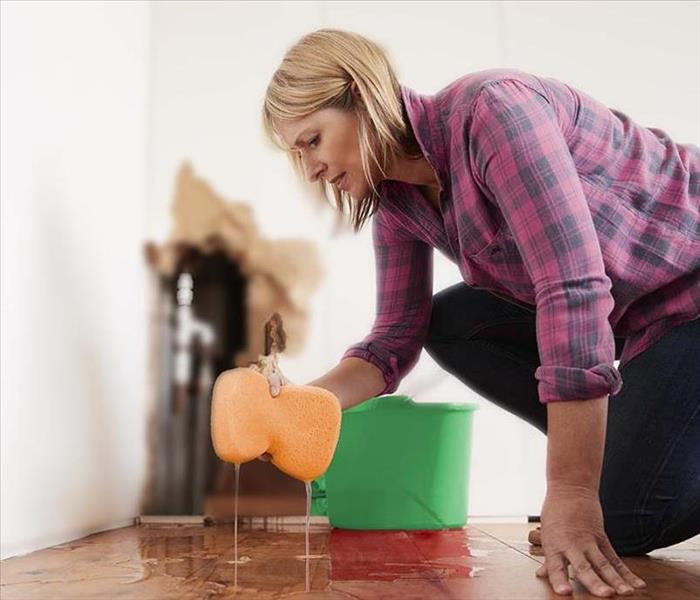 Should You call a Water Damage Repair Company?
Should You call a Water Damage Repair Company?
Why Do You Need a Water Mitigation Company?
If you’re like most homeowners in the Charlotte area, you want to take care of home maintenance on your own. After all, who wants to pay for a repair service when you can just do it yourself? In some cases, that might be the best thing to do, but it’s also important to consult a professional restoration company when the need arises.
As a water mitigation company in Charlotte NC, potential customers can sometimes call back and decide to do the clean up themselves but many have called back with new problems. Lost time, costly do-it-yourself products, and frustration can be avoided by using a professional.
Why use a Water Damage Restoration and Repair Company?
- Uncover hidden moisture problems. When it comes to water damage, there’s often more than meets the eyes. Materials like hardwoods and drywall, are porous, so they absorb water. Moisture can cause the materials to expand, or possibly trap moisture, allowing it to foster mold growth. A water mitigation company has the equipment to both detect and dry these materials.
- Prevent future mold growth. Mold spores are everywhere, but they don’t pose much of a threat until they are exposed to moisture. When water damage isn’t adequately addressed, it can increase the chances of mold growth. Our team can extract and dry the water, plus we apply an antimicrobial to deter mold.
- Equipment and Expertise to remove contaminated water. Not all water damage is equal. Water can occasionally be extremely contaminated (such as floodwater or sewage) and may pose health risks. In these cases, protective gear and specific processes are required for cleaning up the damage to reduce exposure. Our experienced technicians are equipped and certified to handle these situations.
Water damage can come in many different forms and it’s also important to know when things are beyond your control. No matter the situation, SERVPRO of Northwest Charlotteis here to help.
Contact us at (704) 393-7890 for 24/7 Water Damage Mitigation, Repair, and Post Damage Reconstruction.
Is It Clean, Gray or Black Water? Get In the Know On H2O
5/18/2021 (Permalink)
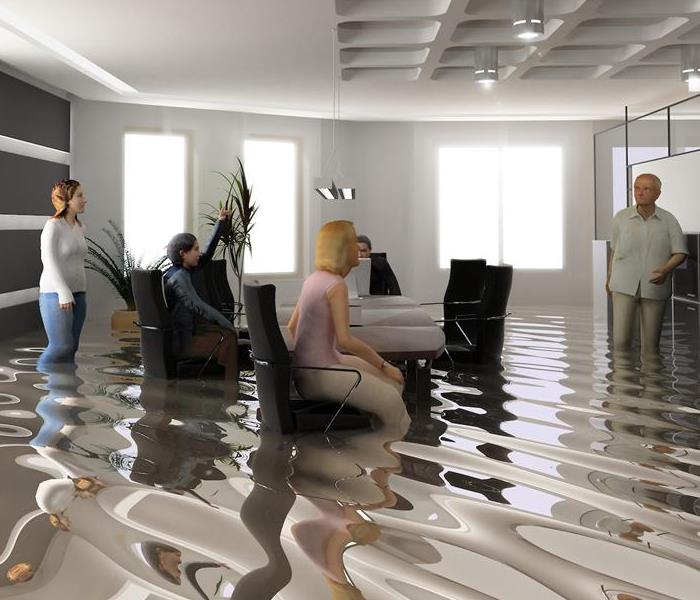 Commercial Property Cleanup Emergency
Commercial Property Cleanup Emergency
A faulty grease trap backs up the sewer of a seafood restaurant. A heavy storm floods a creek that seeps into an adjacent apartment complex. Roots from a 100-year-old cedar tree penetrate a sewer line outside a beauty salon. A cracked toilet tank leaks overnight throughout the administration offices of an industrial plant.
In each of these commercial cleanup emergencies, business owners and property managers must deal with contaminated water that can quickly turn into a critical situation if not handled properly.
When it comes to cleanup and disinfection of commercial spaces, it’s best to call certified water damage restoration experts. The SERVPRO of NW Charlotte, Lincoln County, Southern and NE Gaston County team is trained to handle contaminated water emergencies properly and works 24/7/365 to help our customers get their property back to business.
While we work to provide relief against water damage, it’s essential for business owners and property managers to know the different types of contaminated water. You can easily see or smell contaminates in some cases, but water can look and smell perfectly fine and still be harmful.
Clean, gray and black water: What’s the difference?
Water damage can be classified by three types of contaminated water: clean, gray and black.
Clean water is free from bacterias and viruses and comes from a source like a broken water supply line or leaking faucet. If not treated quickly, clean water can turn into gray or black water, depending on the length of time, temperature and contact with surrounding contaminants.
Gray water, or wastewater, hasn’t come into contact with solid human waste but is still considered contaminated. It also may contain bacteria and viruses that cause discomfort or illness. Gray water drains and flows from places such as showers, sinks and baths. It also comes from overflowing washing machines, dishwashers and toilets with urine but no feces.
If done correctly, gray water can be filtered and reused for lawns and gardens; however, it also can quickly degrade if left untreated.
Black water is highly contaminated and contains harsh chemicals and human waste filled with harmful bacteria and disease-causing pathogens. You should avoid contact with black water as it can cause severe illness or death if ingested. Water is considered black when it comes from a toilet bowl with feces or sewer back-up. It’s also generated from overflowing streams or rivers mixed with sewer water and standing water with microbial growth.
Sewage cleanup and commercial water restoration
Any water contaminated with sewage backup should be considered an emergency and addressed as quickly as possible. The water may contain viruses, bacteria and other microbes that cause serious illnesses. And if black water isn’t removed promptly, it can rot, dry out and lead to airborne contamination.
SERVPRO professionals are specially trained and have the equipment and protective gear to safely restore your business. Our water damage restoration specialists will inspect your business to determine the appropriate plan of action for the type of water encountered.
We’re locally owned and operated and part of the Mecklenburg, Lincoln and Gaston communities. Our fire damage restoration technicians are employees, not contractors. They can respond to sewage cleanup and water damage emergencies with the most advanced cleaning equipment, products and technology to get you back to business. To learn more, call us anytime at (704) 393-7890 or request help online.
Tips and Signs to Help Prevent, Find and Fix Water Damage in Your Home
4/15/2021 (Permalink)
 Tips and Signs to Help Prevent, Find and Fix Water Damage
Tips and Signs to Help Prevent, Find and Fix Water Damage
Water damage from floods, leaks or plumbing mishaps can wreak havoc for Charlotte area homeowners, spreading quickly to ceilings, walls, floors, insulation, duct systems, crawl spaces and attics.
During and after a significant flooding event, you may face many potential challenges - from contaminated water to electrical appliances and outlets exposed to water. While trying to salvage priceless family photos and other valuables, homeowners may also encounter hazardous materials or mold growth.
Fortunately, the water damage repair and restoration experts at SERVPRO of NW Charlotte, Lincoln County, Southern and NE Gaston County have the experience, equipment and technology to restore your property and make the flooding event "Like it never even happened."
But before our team arrives to inspect, assess and find all the damage after a water loss, there are several ways homeowners can help.
Water damage pro tip: Help protect your wood furniture from light flooding and rising water by wrapping aluminum foil around the legs or placing wood blocks under the legs.
Look, smell and listen for water damage
Not all water damage is evident at first glance, which is why homeowners should know the signs of hidden water damage. Quickly identifying and responding to water damage sooner rather than later is critical for drying and safety. It also helps lessen the damage and structural costs to repair and restore your home to normal.
Watch for these three signs of potential water damage:
- Discoloration is a simple water damage indicator because many pigments used in fabrics, paints, floors and ceilings change colors when they contact water. The shape, spread and color will vary depending on the amount of water exposure and what materials the affected surface touched. Color bleeding from one fabric to another is one of the most damaging results of a water-damaged home.
- Oxidized metals, freshly soaked wood, wet insulation and mold growth can create unique and off-putting odors in your home. However, these smells can help identify flood-related issues. For example, a musty smell in your bathroom could be a sign of water damage hidden in cracked shower tiles, old caulking and grout, or a leaky seal at the toilet’s base.
- Whooshing, dipping, humming or other unusual sounds behind walls and below your home floors can indicate a water leak or other plumbing issue. Drips are the most apparent sounds you hear, but high-pressure water inside pipes throughout your home can also create unique sounds when there’s a problem.
Water Damage repair and restoration
As a locally owned and operated business, SERVPRO of NW Charlotte, Lincoln County, Southern and NE Gaston County can respond quickly to your water or flood damage event. And we come armed with all the tools to get it done accurately and efficiently - from an infrared camera to detect hidden moisture behind walls to powerful water extraction equipment that speeds the drying process.
Our residential restoration and cleaning technicians are employees, not contractors, and can respond 24/7 when a significant flooding event occurs. And if we need additional resources or personnel, we can call upon our national network of 1,700 SERVPRO franchises and disaster recovery teams. To learn more, call us anytime at (704) 393-7890 or request help online.
Inspect, Mitigate & Restore: 3 Stages of Water Damage Repair for Businesses
4/15/2021 (Permalink)
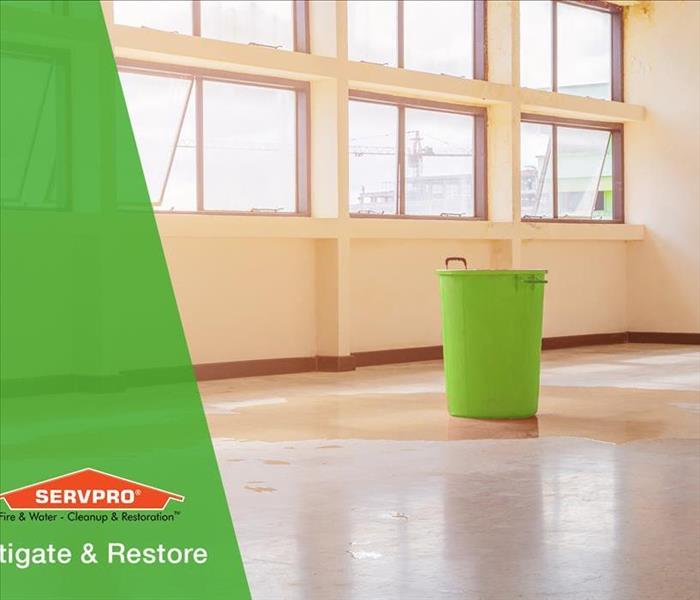 3 Stages of Water Damage Repair for Businesses
3 Stages of Water Damage Repair for Businesses
When a water-related emergency or disaster strikes your business or facility, time is of the essence. There’s a critical period when business owners and property managers must take action to decrease health effects, preserve their commercial space and minimize lost productivity and revenue.
Fortunately, the commercial water damage repair and restoration experts at SERVPRO of NW Charlotte, Lincoln County, Southern and NE Gaston County have the experience, equipment and technology to restore your business or property as if the flooding event never happened.
But before our team arrives to assess the damage, minimize future destruction and develop a restoration plan after a significant water emergency, there are several things business owners and property managers can do to help.
First, be sure to shut off the electrical power before entering your flooded commercial space or building. It’s also advisable to wear a mask, rubber gloves, protective clothing and eye protection. Once inside, ventilate the affected areas by opening windows and doors and placing fans where possible. Keeping good airflow throughout the building’s interior and maintaining moderate temperatures helps decrease mold growth risks.
You’ll likely find porous items that have absorbed contaminated floodwater. Those can’t be restored and should be discarded. Also, throw away any drywall, wallpaper, particle board, carpets, carpet pads, or insulation that has become saturated. Fortunately, many fabrics such as clothing, curtains, drapes, linens and towels are salvageable. Detergent and a normal cycle in a washing machine should remove most contaminants or stains.
When SERVPRO technicians arrive at your business or commercial property, their plan will depend on water damage severity. However, the general process will remain the same: Stages focussed on reducing your downtime, restoring your property, settling any claims and getting you back to business.
1. Inspect water damage. Before restoration can begin, our skilled water restoration technicians will thoroughly inspect your property to identify the scope of the damage, contamination levels, and how far the water has traveled. A detailed look at each area of your business affected by a storm or flooding is the first stage in developing an appropriate water damage repair plan to ensure a successful restoration.
2. Mitigate against further damage. After the inspection and damage assessment is complete, technicians will start the crucial next step of preventing the damage from getting worse and securing the affected areas.
This may include:
- boarding up roofs and broken windows;
- covering areas with tarps;
- blocking water-seeping holes;
- removing excess water;
- identifying and eliminating unpleasant odors; and
- drying the structure to prevent mold or mildew growth, which can take several days to appear.
3. Restore your business. Once cleanup is complete, the water damage repair and restoration phase can begin. Depending on the severity of the water damage, this may involve removing, repairing or rebuilding roofs and walls, replacing insulation, carpets and floor, drying and sanitizing saturation pockets, painting, and restaging the property and its contents to its previous condition. Completion of this stage means commercial clients can return to their business or property as if the water or storm damage disaster never happened!
Commercial water damage repair and restoration
Locally owned and operated, SERVPRO of NW Charlotte, Lincoln County, Southern and NE Gaston County can respond quickly to a water or flood emergency at your business. And we come armed with all the tools to get it done accurately and efficiently.
Our commercial restoration and cleaning technicians are employees, not contractors, and can respond 24/7 when a significant flooding event occurs. And if we need additional resources or personnel, we can call upon our national network of 1,700 SERVPRO franchises and disaster recovery teams. To learn more, call us anytime at (704) 393-7890 or request help online.
3D Technology Gives Homeowners Peace of Mind Throughout Disaster Recovery and Restoration Process
3/22/2021 (Permalink)
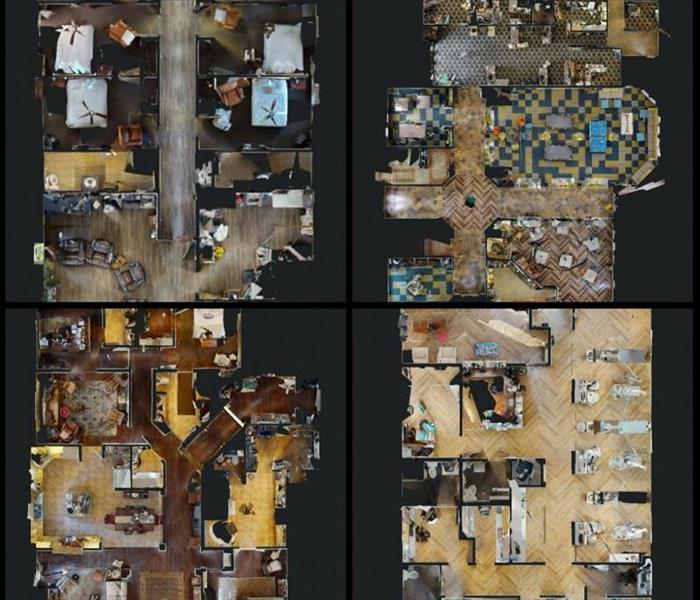 3D scanning technology for homeowners.
3D scanning technology for homeowners.
3D scanning technology is helping residential customers recover from storm, fire, and water damage quicker than ever before while eliminating many of the stresses and inconveniences homeowners face following a disaster.
SERVPRO of NW Charlotte, Lincoln County, Southern and NE Gaston County is one of the first restoration companies in the greater Charlotte area to adopt Matterport’s reality capture technology for comprehensive loss documentation. Using a 3D camera follows property insurance and restoration standards while also adding another transparency level for homeowners and adjusters.
“The Matterport is an amazing technology with far-reaching benefits for homeowners and adjusters,” said Jason Sadler, SERVPRO of Northwest Charlotte’s mitigation estimating manager. “It streamlines the entire loss documentation process by capturing a home in its current state and measuring every inch with 99 percent accuracy.”
As SERVPRO’s Matterport ambassador, Sadler trains restoration specialists to use the 3D camera to scan damaged properties and document everything visually and dimensionally. Removing human error from the process results in a comprehensive and accurate record of a property’s condition and inventory.
“We provide homeowners with more precise loss documentation and repair estimates required for insurance claims. Using the 3D technology eliminates the need to spend hours at a site taking hundreds of 2D photographs and measurements,” he said. “Because the camera captures all the necessary data, our customers and adjuster know they can trust us because this technology is going to hold us accountable.”
Homeowners benefit from expedited claims process
Residential clients are happy that SERVPRO of NW Charlotte, Lincoln County, Southern and NE Gaston County has implemented scanning solution technology because it helps speed up the claims process and offers them peace of mind. Meanwhile, it allows adjusters to review scans and take precise measurements from their computer rather than spend hours doing it at a job site and keep the claim process moving forward.
“Our goal is to make our clients’ houses feel like home again as quickly as possible after disaster strikes and the Matterport technology helps expedite the settlement of claims,” he said. “Essentially, this is a third-party entity performing documentation for us. It’s scanning and providing a floor plan for us, the adjuster and the client. Project managers and adjusters aren’t doing it. The camera is doing it now.”
There’s no longer a need to argue about measurements or pre-existing conditions, negotiate different functions of an estimate, or try and determine if a scratch on a kitchen floor was there before or after work started. All these issues are settled by the fact that the camera can capture such finite details, Sadler said.
“It’s also been a tremendous help for SERVPRO’s in-house team that handles personal property and contents. If there’s a fire or substantial water damage, it might require packing out an entire home and then restaging it after the restoration is completed,” Sadler said. “Of course, we label and document everything, but 3D scans allow the team to put a home back together exactly how it was supposed to be before the fire, water or storm disaster happened.”
Customer connection throughout disaster recovery process
Residential clients can easily access their homes’ 3D scans and loss documentation from anywhere via a secure web link on Matterport’s website, where the content is stored. The technology keeps homeowners informed and connected throughout the entire recovery and restoration process.
“It gives a lot of clarity into what's going on with a claim or property, which benefits homeowners and adjusters,” Sadler said. “They put more trust in us because we're offering documentation that's far and wide better than anybody else documenting a claim traditionally.”
We’re locally owned and operated and part of the Mecklenburg, Lincoln and Gaston communities. Our residential restoration and cleaning technicians are employees, not contractors. They can respond 24/7 to homeowner emergencies with the most advanced cleaning equipment, products and 3D technology. To learn more, call us anytime at (704) 393-7890 or request help online.
Water Damage Repair: When It’s Time to Ditch the DIY and Call the Pros
11/12/2020 (Permalink)
 Water Damage Repair: When It’s Time to Ditch the DIY and Call the Pros
Water Damage Repair: When It’s Time to Ditch the DIY and Call the Pros
After working a 60-hour week, all Joan wanted when she left the office late Friday night was to unwind by taking a hot bath with a mug of chamomile tea, hummus and cracker platter, and the latest Patricia Cornwell mystery.
But things took a “wet” turn when she fell asleep in the bathtub with the water running. Joan awoke in a panic hours later to her husband, Steve, screaming her name. He had come home from bowling night to a flooded living room and water flowing down the stairs. The couple assessed the water damage and *thought* they could handle it themselves with help from DIY YouTube videos and bribing their friends with pizza and beer.
Do-it-yourself vs. calling the pros
What if a tree falls on your home and a storm dumps an inch of water in your now-exposed attic? Or, if your condo’s bedroom shares a wall with a neighbor’s living room that catches fire and is doused with 300 gallons of water? Or, if the dark stain on the ceiling in your daughter’s bedroom is expanding by the day?
In each of these instances, the wisest decision you can make is to pick up the phone and call in the pros. Or the SERVPROs, if you will.
Not only does water damage affect your home’s structural foundation, but it also creates an ideal environment for mold and mildew to grow, termites and carpenter ants to move in, and powerful odors to fill your living spaces. To fully restore and dry your property - and have the validation and documentation to back it up - you need specialized training and equipment. And that’s where SERVPRO comes in.
Ongoing training + latest technology = bye-bye moisture
Our local technicians are well-prepared to tackle any water damage emergencies - long before they ever set foot in your home. In addition to earning the Institute of Inspection Cleaning and Restoration Certification, they complete Employee Certification Training and a 15-day hands-on course. Continuing education classes keep the water restoration team informed on scientific drying principles and the latest technology.
Their extensive education and training come into play when they arrive at your home with all the tools they need to restore it to pre-water damage condition: Moisture detection and measurement equipment, including an infrared camera. Powerful water extraction pumps and vacuum units to speed the drying process. Industrial strength air movers and dehumidifiers to pull water vapor from the air. And thermal foggers, deodorization machines, and sanitizing agents and treatments to eliminate odors.
Tips to help prevent water damage
While our specialists are available at a moment’s notice for any water damage or restoration emergency, there are a few DIY steps homeowners can take to avoid them.
- Clean - Keep those gutters clean to ensure proper drainage and direct downspouts at least five feet away from your home. Whenever possible, slope your yard away from the foundation.
- Test - At least once a year, check your sump pump. During heavy storm seasons, test it more frequently.
- Fix - Keep on the lookout for dark spots under pipes and on ceilings. If you notice leaks or dripping pipes, get them fixed. Also, repair cracked caulking and inspect for missing, loose or damaged roof shingles.
And for Joan’s case, we’ll add one more tip: Self-care is important, but please don’t fall asleep in the bathtub with the water running!
24/7 water damage and restoration assistance
Although SERVPRO of Northwest Charlotte is part of a national network of 1,700-plus franchises, we’re locally owned and operated and part of the Mecklenburg, Lincoln, and Gaston communities. Our water damage and restoration experts are employees, not contractors, which means our team can respond faster to emergencies with a proven water damage restoration process and the most advanced technology and equipment. For questions, contact us anytime at (704) 393-7890 or request help online.
What to do after a flood
10/24/2019 (Permalink)
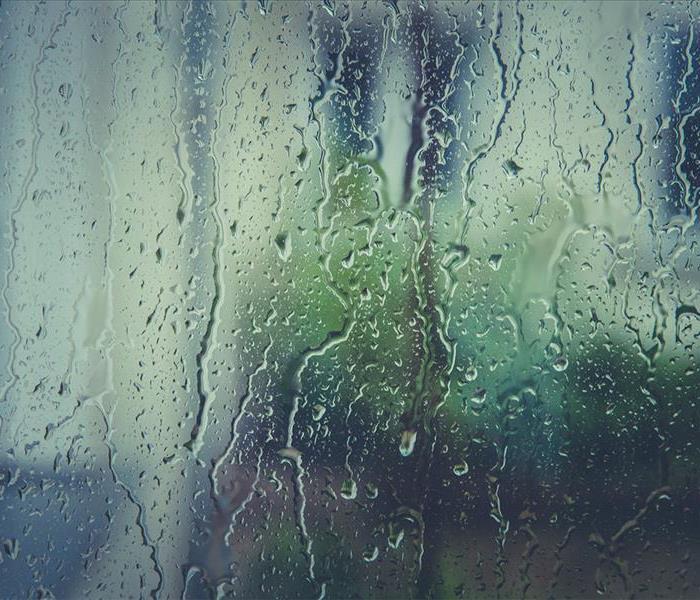 What to do after a flood
What to do after a flood
Water Damage in Charlotte from floods is not common, but there are a few things you can do to stay safe after flood water has damaged your property.
Electrical
Electrical power and natural gas or propane tanks should be shut off to avoid fire, electrocution, or explosions. Try to return to your home during the daytime so that you do not have to use any lights. Use battery-powered flashlights and lanterns, rather than candles, gas lanterns, or torches. If you smell gas or suspect a leak, turn off the main gas valve, open all windows, and leave the house immediately.
Notify the gas company or the police or fire departments or State Fire Marshal's office, and do not turn on the lights or do anything that could cause a spark. Do not return to the house until you are told it is safe to do so. Your electrical system may also be damaged. If you see frayed wiring or sparks, or if there is an odor of something burning but no visible fire, you should immediately shut off the electrical system at the circuit breaker.
Avoid any downed power lines, particularly those in water. Avoid wading in standing water, which also may contain glass or metal fragments. You should consult your utility company about using electrical equipment, including power generators. Be aware that it is against the law and a violation of electrical codes to connect generators to your home's electrical circuits without the approved, automatic-interrupt devices. If a generator is on line when electrical service is restored, it can become a major fire hazard.
In addition, the improper connection of a generator to your home's electrical circuits may endanger line workers helping to restore power in your area. All electrical equipment and appliances must be completely dry before returning them to service. It is advisable to have a certified electrician check these items if there is any question. Also, remember not to operate any gas-powered equipment indoors.
Cleanup
Cleanup Walls, hard-surfaced floors, and many other household surfaces should be cleaned with soap and water and disinfected with a solution of 1 cup of bleach to five gallons of water. Be particularly careful to thoroughly disinfect surfaces that may come in contact with food, such as counter tops, pantry shelves, refrigerators, etc.
Areas where small children play should also be carefully cleaned. Wash all linens and clothing in hot water, or dry clean them. For items that cannot be washed or dry cleaned, such as mattresses and upholstered furniture, air dry them in the sun and then spray them thoroughly with a disinfectant. Steam clean all carpeting.
If there has been a backflow of sewage into the house, wear rubber boots and waterproof gloves during cleanup. Remove and discard contaminated household materials that cannot be disinfected, such as wallcoverings, cloth, rugs, and drywall.
Health Safety
Immunizations Outbreaks of communicable diseases after floods are unusual. However, the rates of diseases that were present before a flood may increase because of decreased sanitation or overcrowding among displaced persons. Increases in infectious diseases that were not present in the community before the flood are not usually a problem.
If you receive a puncture wound or a wound contaminated with feces, soil, or saliva, have a doctor or health department determine whether a tetanus booster is necessary based on individual records. Specific recommendations for vaccinations should be made on a case-by-case basis, or as determined by local and state health departments.
Swiftly Flowing Water
If you enter swiftly flowing water, you risk drowning -- regardless of your ability to swim. Swiftly moving shallow water can be deadly, and even shallow standing water can be dangerous for small children. Cars or other vehicles do not provide adequate protection from flood waters. Cars can be swept away or may break down in moving water.
Chemical Hazards Use extreme caution when returning to your area after a flood. Be aware of potential chemical hazards you may encounter during flood recovery. Flood waters may have buried or moved hazardous chemical containers of solvents or other industrial chemicals from their normal storage places. If any propane tanks (whether 20-lb. tanks from a gas grill or household propane tanks) are discovered, do not attempt to move them yourself. These represent a very real danger of fire or explosion, and if any are found, police or fire departments or your State Fire Marshal's office should be contacted immediately.
Car batteries, even those in flood water, may still contain an electrical charge and should be removed with extreme caution by using insulated gloves. Avoid coming in contact with any acid that may have spilled from a damaged car battery.
Remember, be smart and stay safe. Feel free to contact our damage restoration and mitigation specialists anytime at (704) 393-7890.
When a Hurricane is Scheduled to Hit
10/4/2019 (Permalink)
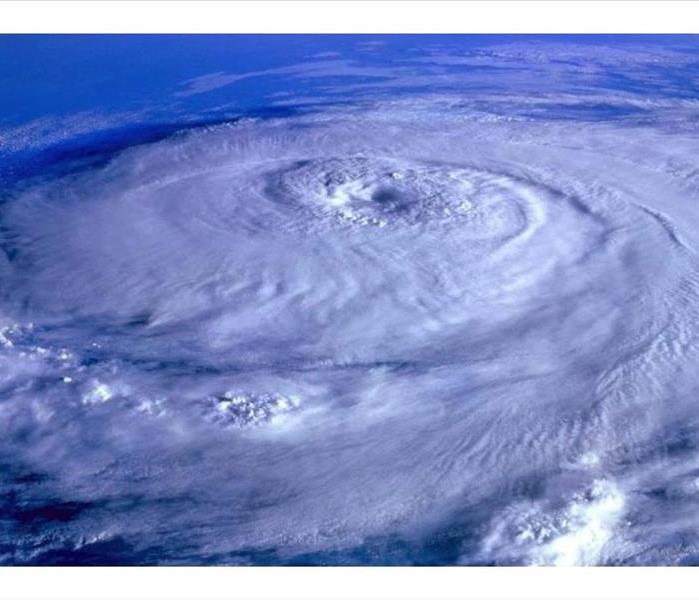 Hurricane Preparedness
Hurricane Preparedness
When a hurricane is 36 hours from arriving
- Turn on your TV or radio in order to get the latest weather updates and emergency instructions.
- Restock your emergency preparedness kit. Include food and water sufficient for at least three days, medications, a flashlight, batteries, cash, and first aid supplies.
- Plan how to communicate with family members if you lose power. For example, you can call, text, email or use social media. Remember that during disasters, sending text messages is usually reliable and faster than making phone calls because phone lines are often overloaded.
- Review your evacuation zone, evacuation route and shelter locations. Plan with your family. You may have to leave quickly so plan ahead.
- Keep your car in good working condition, and keep the gas tank full; stock your vehicle with emergency supplies and a change of clothes.
- If you have NFIP flood insurance, your policy may cover up to $1000 in loss avoidance measures, like sandbags and water pumps, to protect your insured property. You should keep copies of all receipts and a record of the time spent performing the work. They should be submitted to your insurance adjuster when you file a claim to be reimbursed.When a hurricane is 18-36 hours from arriving
- Bookmark your city or county website for quick access to storm updates and emergency instructions.
- Bring loose, lightweight objects inside that could become projectiles in high winds (e.g., patio furniture, garbage cans); anchor objects that would be unsafe to bring inside (e.g., propane tanks); and trim or remove trees close enough to fall on the building.
- Cover all of your home’s windows. Permanent storm shutters offer the best protection for windows. A second option is to board up windows with 5/8” exterior grade or marine plywood, cut to fit and ready to install.
When a hurricane is 6-18 hours from arriving
- Turn on your TV/radio, or check your city/county website every 30 minutes in order to get the latest weather updates and emergency instructions.
- Charge your cell phone now so you will have a full battery in case you lose power.
When a hurricane is 6 hours from arriving
- If you’re not in an area that is recommended for evacuation, plan to stay at home or where you are and let friends and family know where you are.
- Close storm shutters, and stay away from windows. Flying glass from broken windows could injure you.
- Turn your refrigerator or freezer to the coldest setting and open only when necessary. If you lose power, food will last longer. Keep a thermometer in the refrigerator to be able to check the food temperature when the power is restored.
- Turn on your TV/radio, or check your city/county website every 30 minutes in order to get the latest weather updates and emergency instructions.
If you experience any storm damage in Charlotte - call SERVPRO of NW Charlotte 24/7 at (704) 393-7890.
Water Damage Clean Up
7/19/2019 (Permalink)
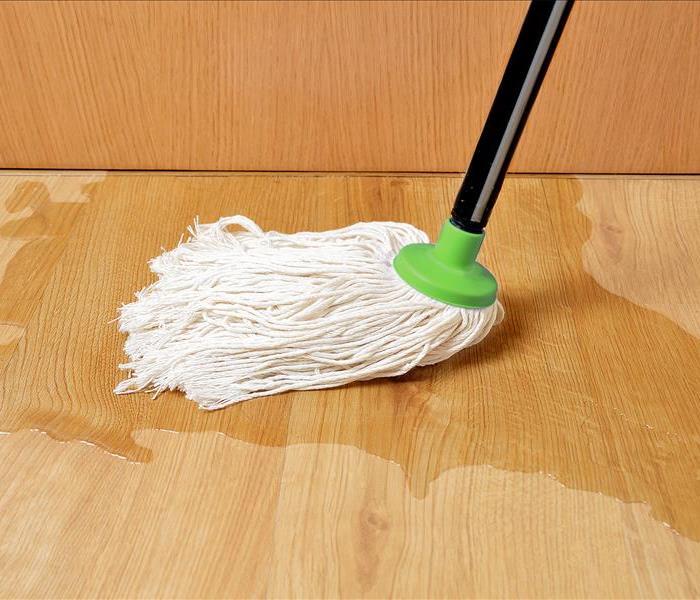 Water Damage Cleanup in Home
Water Damage Cleanup in Home
Tips for cleaning your Charlotte home after water damage
Homes in Charlotte NC are impacted each year by unforeseen water damage due to weather events, disrepair, and the unexpected. Water in unwanted places can cause a lot of damage. Not only can it ruin your prized possessions, but also the house in which they are stored. If you’re able to act quickly, you can minimize the damage and possibly save some of your possessions. Some of your success depends on how long the water’s been around, there might be pieces of furniture that can be saved, and sometimes, even carpet, but any electronics hit by water are probably doomed.
Don’t treat flood water in unwanted places lightly: even if your basement only has an inch of water in it, or is even just damp, it is the perfect breeding ground for mold. Mold growth not only ruins walls, furniture, carpets, flooring, etc.
So in addition to calling your insurance company, here are a few tips to deal with your flooded basement and minimize the water damage. (Call your insurance company before you do anything, and tell them what you want to do.)
- Disconnect the power, unplug any electronics, and remove electronics, furniture and movable items immediately. The faster you get items out of water’s way, the more likely you’ll be able to save them. Definitely move all electrical items first, and if you can, turn off your power leading into the affected area, especially if water rises above electrical outlets. Pull up any carpets (wall to wall and area rugs) and under-padding. You may be able to save the carpet if you get it cleaned and disinfected, however, it may shrink and be better off as an area rug afterwards. It’s unlikely you’ll be able to save the under-padding, which acts like a sponge and absorbs a lot of water.
- Get rid of the water. There are several ways to get rid of the water. If you don’t have power, or are worried about loose wires, the old-fashioned, manual way will work. Use old towels, buckets and mops to soak up as much water as possible. As long as sewers in your neighborhood aren’t backed up, you can pour the water down the drain, otherwise, pour onto your lawn or other permeable surface. A wet/dry vacuum can be used too, note: be very careful to plug it into outlets far away from water. Don’t use an extension cord as the connection could also short out and give you a nasty shock. Water and electricity don’t mix! If your basement or other flooded area is overwhelming and you have power, consider renting (if available) a sump pump from your local Rent-all or hardware stores. Getting rid of all the water and drying out the area is the most important thing you can do to prevent mold growth.
- Dry out the affected area. Once you’ve mopped up all the water, use fans and a dehumidifier to help dry out the area. If it’s stopped raining, open windows to allow for air circulation and faster drying. You want to dry the area out as soon as possible. If you have a finished basement and the drywall was affected, you’ll probably have to cut away the areas that were touched by water as the drywall will crumble and the paper backing is a good source of food for mold. If you have baseboard trim, take it up first, and if it’s made from pressboard it will likely not be salvageable. If it was wood, you might be able to save it.
- Disinfect. After the area has dried out, including wood beams, insulation, drywall, etc., use a good disinfectant to get rid of any bacteria that might have come up through sewers, toilets, etc. Disinfect all areas affected by the flood waters including walls and wood and non-upholstered furniture that sat in flood water.
- Prevent mold growth. After you’ve disinfected and let the area thoroughly dry out, apply Concrobium throughout the affected area according to directions. I can’t say enough good things about this product; it is non-toxic, made with distilled water and inorganic salts. You can use it on furniture, walls, floors, basically anything that is susceptible to mold growth. Once a thin layer of Concrobium Mold Control is applied, let it dry overnight. As Concrobium dries, it forms a thin layer over any mold that may be growing and actually crushes the roots of the spores. Wherever it’s sprayed will prevent any mold from growing, providing continued resistance. If you’re spraying an entire room, you might want to consider renting a mister from a hardware store such as Home Depot. It’s easy to use and very fast.
- Dispose of damaged items responsibly: you’ll be tempted to throw everything into a dumpster and send it all away and out of site. But if you can organize damaged goods into piles and take what you can to local recycling centers in Charlotte, and Mecklenburg County - you will help alleviate the pressure on your local landfill site. Go to the City of Charlotte Waste Management website to find out where to recycle old paints, stains, adhesives and other toxic liquids, any damaged electronics from cell phones to TVs and computers, furniture, and even drywall.
When in doubt, call a licensed water damage cleanup company in your area.
Frequently Asked Question During the Water Damage Restoration
6/18/2019 (Permalink)
 Question during the Water Damage Restoration process
Question during the Water Damage Restoration process
Here are the answers to some of the most frequently asked questions about the water damage restoration process.
1.) What happens and what are the effects when water floods my home or business?
- First, when water contacts drywall, it sags and disintegrates. Then you’ll see paint bubbles and peeling as the water wicks up the drywall. After that, water saturates the insulation behind the drywall.
- Next, if water dwells in your property for any length of time, wood structures begins to swell. The glue holding your particle board kitchen and bathroom cabinets dissolves, causing them to crumble. The longer the water dwells in your property, the more likely it is that the hardwood floors will buckle and warp. Wood exposed to long-term water damage rots.
- Third, water-soaked carpets “delaminate.” Delamination is the term for carpet that pulls away from its backing. Once this happens, the carpet is permanently ruined.
- Fourth, water damage can short-out electrical systems. This can cause fire and shock hazards and damage to electronic equipment.
2.) Why can’t I clean up and dry out the damage myself?
Quickly wiping or mopping up a small spill in the middle of the floor is okay.
But the problem is, if water flooded a large portion of your home or office, it’s the water you can’t see, the water that wicks up behind the wall or under the floors, that causes problems.
These dark cavities are the perfect place for mold and mildew to grow. And, without meters to measure the moisture, you won’t be able to find and remove the water you can’t see hiding in the structure.
All that excess water promotes mold and mildew growth and compromises the structural integrity of the materials.
In addition, if the water damage comes from a contaminated source like a sewage backup, it presents an imminent health threat. In this case, you especially want to AVOID ANY CONTACT and call us immediately.
So, no matter what caused the water damage, to prevent future health or structural problems, water damage restoration should always be handled by a licensed, insured, IICRC certified professional water damage restoration contractor like SERVPRO of NW Charlotte, Lincoln County, Southern and NE Gaston County.
3.) What does a professional water damage restoration contractor do differently than I would do to dry water damage?
- First, after we extract the water, we contain the affected area.
- Second, we remove any non-salvageable damaged materials.
- Third, we photo catalog every part of the damage and all damaged items.
- After that, we spray anti-microbial solution on the affected area.
- Shop vacs and common household fans just aren’t designed to remove enough moisture or generate enough air movement to dry your home or office completely after a flood. So, we use specialized, high-speed, industrial air movers and dehumidifiers. We set up the equipment in a specific pattern, creating the most efficient drying system for your property.
- While the equipment removes and controls the humidity and moisture levels in the air, we monitor the progress on a daily basis with specialized meters to measure the moisture.
- Finally, we communicate with your insurance company using the latest technology to facilitate efficient processing of your insurance claim. We’re experts at this, and we’ve helped hundreds of homeowners in the Greater Philadelphia and Cherry Hill area recover quickly from water damage loss.
4.) How long does it take to dry my home or business?
The only answer to this question is It depends.
It all depends on the size and scope of the loss.
Completely drying a structure depends on the type of water damage, how bad it was, how long the water was sitting, and the type of building materials involved. For example, concrete takes much longer to dry than wood.
Many times, water damage to your home or business takes 2 to 3 days to dry. However, properties exposed to water damage for a long time will take longer to dry!
5.) Do I have to leave my home or close my business during the restoration?
If the property damage doesn’t require a lot of reconstruction, you can stay in your home or office. However, the equipment we use during the drying process can be noisy. And it creates a lot of air movement which may be considered as unlivable or unworkable conditions. If the bathrooms in your office, or the kitchen in your home are a part of the damaged area, check with your insurance company for reimbursement of alternate living expenses or business continuity expenses until the restoration job is complete.
6.) Why does SERVPRO need access to my house or business?
Once the water is extracted and we begin the drying process, we need to monitor and control the moisture and humidity levels in the home. By doing this, we can prevent the growth of toxic mold. In addition, insurance companies require daily monitoring reports to justify your claim for damages.
7.) Why is my property monitored so often?
We place our industrial sized equipment so it will operate as efficiently as possible according to the moisture mapping. We monitor and check the progress of every job regularly so we can make any adjustments as needed. Remember our job is to get you clean, dry and sanitized as quickly as we can. So monitoring helps us do that.
8.) Why does the air in my home or office feel so dry?
We set up the equipment we use during the drying process so it will remove as much moisture from the affected space as possible. Our equipment creates an atmosphere that’s as dry as possible. This is just temporary. Once the drying process is complete, and we remove the equipment, the air condition will return to normal.
9.) Is it okay to leave the equipment running all the time?
Absolutely! Our specialized equipment is made to run continuously without overheating or causing safety problems. Remember, we position the equipment in a particular way to promote the drying process. So please don’t move it.
10.) Can I turn the equipment off at night to save money or to reduce noise?
Please don’t!
The drying process requires running the equipment 24 hours a day for several days.
Our equipment is designed for efficiency.
And because we know the noise might be problematic, for sleeping purposes or the quiet enjoyment of your home or office, we often suggest you call your insurance agent to see if your policy covers alternate living expenses or business continuity expenses.
11.) Is it okay for me to open the doors and windows?
Please don’t! Our technicians have set up the best conditions on your property for drying it efficiently, if you open windows during the drying process it causes problems. Depending on weather conditions, opening windows slows down the drying progress. So, the best rule of thumb is to keep doors and windows closed, and don’t turn off air conditioning or heat without talking to us first.
12.) If I filed a claim, do I have to wait for an adjuster to come out before I call you?
The answer to this question is usually no.Most homeowner and business policies require you to do whatever you can to prevent further damage.
- The first step is to stop the source
- Next, call your insurance company. Ask them if you have coverage. They will probably issue you a claim number at this time. And, they will probably give you 2 or 3 names of restoration companies to call.
- After you call us, take pictures of the damage. Even though we will take pictures when we arrive, we tell our customers they can’t take enough pictures!
- After that, if you can, remove or separate any personal items and furniture from the damaged area and do what you can to remove the standing water. Just don’t throw anything away.
13.) Do I have to use the restoration company the insurance company recommends?
No. You don’t have to use the company the insurance company recommends. You are free to hire whoever you want. As with every profession, there are good water damage restoration professionals and not so good ones.
Remember: Most reputable water damage companies have worked with the major insurance companies and are experts at dealing with adjusters and claims.
The benefit to you of hiring us: Once we have the information about your claim, we’ll communicate directly with your insurance adjuster to make the process smooth and easy for you.
14.) If materials need replacement, can I replace them with something different?
Our job in water damage restoration is to return your property to you in its pre-damaged condition. Your insurance company will pay to replace “like-with-like.” However, after large water damage to your property, when many items have been removed, it makes the perfect time to renovate and update. But if you want to upgrade, you’ll need to pay the difference out of pocket from what your insurance company allocated.
15.) Will the carpet need to be replaced?
In some situations where carpet has been wet for an extended period, water damage will cause what is called delamination (the backing separates from the fibers) and will usually require replacement. Or if the water was from a non-clean source like sewage, the carpet will most likely need to be replaced. But in most cases, if carpets were saturated by clean water, and if we get to them right away, they can be dried, sanitized and cleaned without damage.
16.) Do I need to find a reconstruction contractor to do the repairs after the water restoration is done?
If you hired us to handle your loss from start to finish, you don’t need to worry about finding a general contractor. We have a team of qualified, experienced professionals to do the reconstruction needed, or we use sub-contractors as a part of the restoration package.
17.) Are there any chemicals used that could be harmful to me or my pets?
We use several different anti-microbials or biocides during every water damage mitigation job. These prevent mold, mildew, and bacterial growth. And most of them are rated safe for pets and children. But, if you have concerns about toxicity or chemical exposure, ask the technician on call which anti-microbial solution he will be using. You can also ask him to provide you with the Material Safety Data Sheets (MSDS sheets) for that product. But to be safe, it’s wise to keep yourself, children, and pets away during the drying process.
And, our most favorite of the frequently asked questions about water damage restoration:
18.) Can water damage be prevented?
There’s not a lot you can do to prevent water damage from an act of nature. Water damage from severe storms that cause over-the-ground flooding happen. But not as often as you might think.
Although all 50 states experience flooding, most water damage to properties is caused when indoor plumbing fails. And, while there are some types of indoor plumbing issues that can’t be prevented, many can.
The key to prevention is regular maintenance.
So check back with us often. In our blog, we post information homeowners and business owners to use to prevent all different kinds of property damage.
But in a nutshell, here are the 5 basic steps to prevent water damage you can take each month:
- First, make sure all your appliances (e.g., dishwasher, clothes washer, and water heater) are in good working order. Check all water connections and hoses.
- Second, check under your kitchen and bathroom sink for signs of corrosion and make sure connections are tight.
- Third, check the toilets in each bathroom for any signs of leaking.
- Fourth, monitor your water bills. A sudden, unexplained increase in water use can be caused by a leak.
- And last, make sure everyone knows how to shut off the water supply.
Have more questions. We're here to help. Call us anytime at (704) 393-7890.
When Your Home Needs Water Damage Repair
5/17/2019 (Permalink)
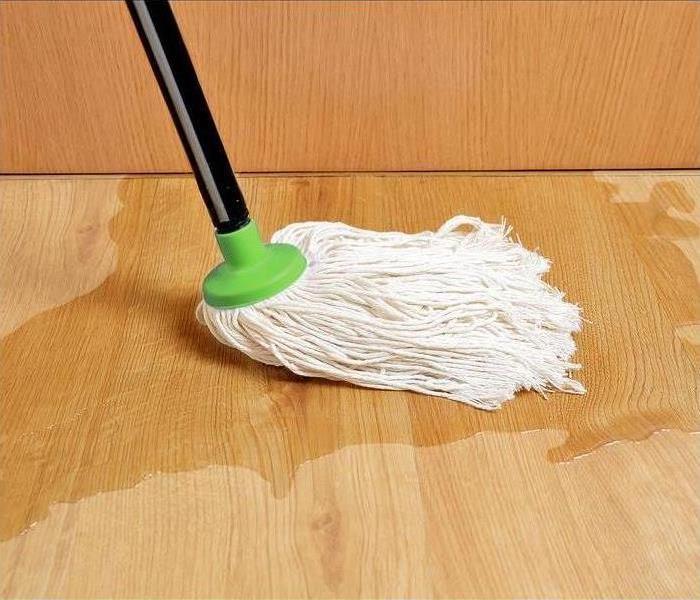 When Your Home Needs Water Damage Repair
When Your Home Needs Water Damage Repair
How Water Damage Occurs
Water Damage occurs for any number of reasons and sometimes it goes on long before you notice it. The most common ways in which water damage occurs are the following:
- Pipes – Leaking, burst, or cracked pipes are common in homes, especially older homes where pipes might need replacing. Spots with prior repairs are more susceptible to future damage with time and use. Weather changes and weakened areas of pipe can all lead to water damage in your homes.
- Flooding – Flooding whether caused by heavy rain, plumbing failures, or groundwater exposure, causes extensive damage and affects many surfaces and items in your home from the floor to ceiling including electrical outlets, TV’s and appliances, and furniture.
- Basements and Crawlspaces - Accumulating water can sit and collect in damp and cool places like a basement or crawlspace.
Results of Water Damage
Even the smallest amount of water damage can lead to deteriorating housing materials and fungal growth like mold. Mold loves to multiply in damp, moist, and dark locations. Areas in your home that were not properly cleaned and dried are perfect hosts for mold. Humid locations are especially susceptible to mold growth. Mold spores are also airborne, spread quickly, and can cause health effects.
You Have Water Damage. Now What?
First, when accessing if you should attempt water damage repair before calling a professional also determine whether it is safe to remain in your home. The biggest concern is your electrical system and the potentials for injury from slipping. Then,
- The sooner you clean the better. If the water damage is manageable and your safety in check, begin the clean-up process right away.
- Water is heavy. Removing water logged and soaking wet items is a laborious task, therefore be aware of your own abilities and safety when removing wet items.
- Leave your vacuum in the closet. Your household vacuum is not equipped to handle water removal. Use a mop and bucket, or another absorbent cloth, to soak up and dispose of the water manually. Blot rugs and furniture with absorbent material to soak up the water.
- Hang up those wet fabrics. Leaving any fabric material soaking in water is a fungus breeding ground. Remove cushions, curtains, blankets, and throw rugs to dry elsewhere.
- Keep those appliances and electronics off. Your electronics could have water damage where you cannot see it.
- Clean up. Clean up and remove everything from the waterlogged area that isn’t bolted in place.
Leaving any water damaged areas unrepaired leads to further damage and toxic living situations.
Lastly, call a well-trained water restoration professional with industrial equipment to ensure water damage repairs happen immediately and properly. A water damage professional handles the entire repair process from removing the water to ensuring everything in your home is dry; preventing mold growth and further material damage, protecting your health and making your home safe again.
Tips To Prevent Water Damage
5/10/2019 (Permalink)
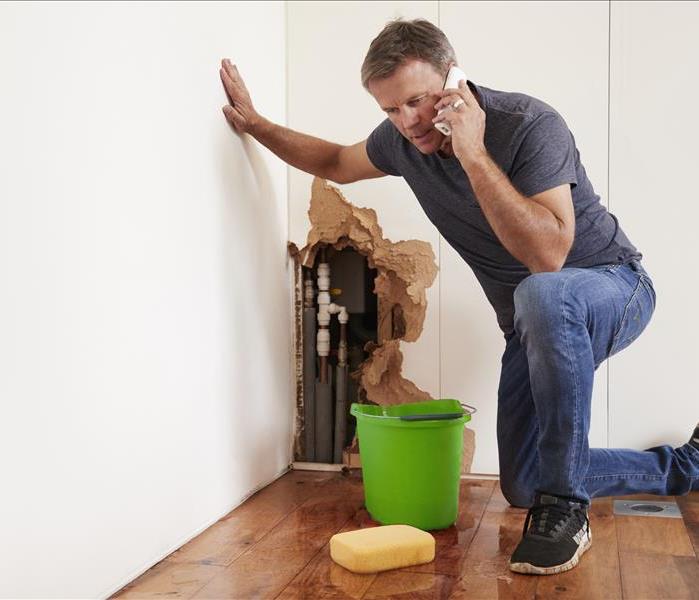 Prevent Water Damage
Prevent Water Damage
Prevent Water Damage in Your Home
Water damage is something no one wants to deal with, large or small. It can wreak havoc in your home or business, and the cleanup required can be both time consuming and expensive, especially in cases where large areas are effected, or damage that later results in mold. When water damage occurs, it not only compromises part, if not all, of the structure of the dwelling, but the furnishings, appliances, collectibles and a number of other things.
Many times water damage comes from leaky or busted water pipes in a bathroom or kitchen. In the bathroom, there are a few simple things you can do to possibly prevent future problems. For one thing, if you don't have an exhaust fan, install one. Steam and humidity that results from your baths and showers provide a perfect environment for mold to grow; exhaust fans will control this. Also, watch for stains or spots forming on the walls that could indicate leaking pipes behind the sheet rock or other wall coverings. You might want to repair the grout or chalking around your tub, shower, or toilet that is beginning to get loose, especially if you are noticing small puddles of water around these areas.
Though you cannot see below the tiles, the moisture could be causing damage to the wood flooring beneath. If this is happening, it could also be a breeding ground for wood damaging insects. One other thing you definitely need to do is check the pipes located under the counters in not only the bathroom, but kitchen as well. Since you have to get down on your knees and move items that may be stored in front of, or under them, you don't know there is a problem until it is too late. If you see the fittings, or the pipes are getting rusty and worn, you should replace them.
When in doubt, it's best to contact a water damage repair and mitigation company in your area.
Here are a few significant and handy protection tips:
- Check to make sure the water hoses running from the washing machine are in good repair
- Dishwashers should be checked regularly as they have a high potential to leak. Installing steel braided hoses on appliances may be worth looking into.
- Pipes and connections should be checked regularly
- Avoid flushing foreign objects down the toilet
- Remember to clean out roof gutters as this is a major cause of water damage
If water damage has already occurred, here are some tips to help minimize damage:
- Turn off the source of the water intrusion
- Remove furniture and rugs off the floor or they may leave permanent stains
- Avoid lifting up carpets from edges as this may cause shrinkage which is virtually impossible to repair.
- Use foil to put between furniture legs and carpet
- Wipe down your furniture
- Don't use an ordinary vacuum cleaner to suck up water
- Put down towels and mop to soak up excess water
- Turn on air conditioning to dehumidify air and turn on fans (if safe to do so)
- Call an IICRC qualified water damage business as soon as possible.
Preparing Your Home for Flood Damage
5/1/2019 (Permalink)
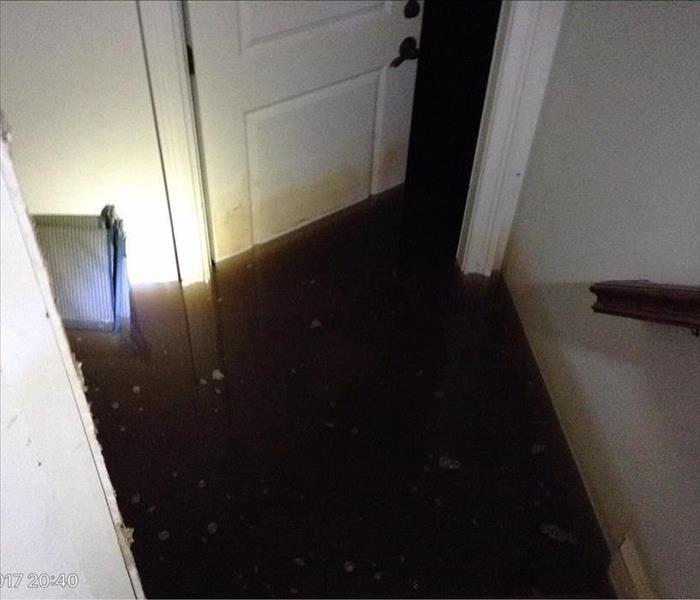 This customer's basement was flooded by ground water through a window.
This customer's basement was flooded by ground water through a window.
How to Protect Your Home from Flood Damage in the Future
- Consider flood insurance (especially if you live in areas where weather-related flooding is common). Government-issued disaster assistance doesn’t always cover the cost of damage from a flood, so it’s important to consider a supplemental insurance policy.
- Bring appliances such as utilities, broilers, window air conditioning units and other HVAC equipment to higher ground if possible, as these items are particularly vulnerable to flood damage.
- Hire a trusted plumber to install a sewage water backstop or sump pump. Some cities offer programs to fund the installation of these types of valves. Check with your local official to see if this is offered in your area.
- Fill any holes or cracks in foundation with caulk or patching to prevent potential leaks.
3 Things Homeowners Should Know About Filing A Water Damage Claim
5/1/2019 (Permalink)
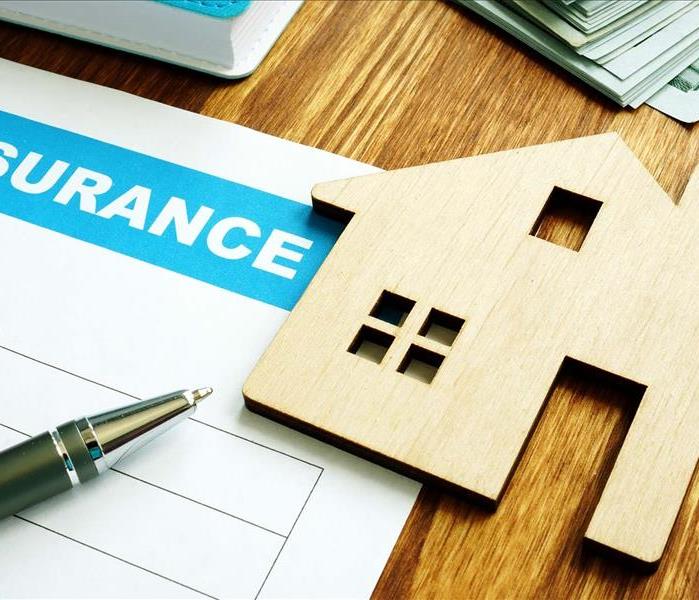 Filing a Water Damage Claim
Filing a Water Damage Claim
1. Understand what is covered by your Insurance Policy
When damage has already occurred to a home, it’s often not possible to change your insurance plan immediately after the fact. Choosing an insurance policy that will cover common types of damage is generally helpful. By knowing what your insurance policy will cover, you can be more prepared for a disaster, and you can quickly make a claim and spend less time worrying about the financial aspect of the water damage.
2. Documentation Is Key
After you’ve made the insurance claim, your insurance company will likely request documentation in order to know how to compensate you. Many insurance companies send an adjuster to photograph the damage that has occurred from the bursting pipes or flooding. However, it can also be useful for you to provide additional documentation to the insurance adjuster and your insurance policy, as more information can often be useful.
3. Time Matters
After a claim has been made, the next priority is to the issue and clean your home. However, spending time attempting to fix a broken pipe or trying to clean your home on your own can be both time-consuming and hazardous. Standing water can cause structural damage and can result in mold growth, making it important to quickly clean your home. Making the most of the time you have and calling in professionals is often the best way to ensure your home doesn’t become more damaged.
Understanding what insurance policies tend to cover, knowing how to document the effects of bursting pipes or a flood and understanding the importance of reacting quickly can make the claims process easier. Homeowners with damaged homes might find it helpful to contact water damage restoration experts.
SERVPRO of NW Charlotte is here to help every step of the way. Call us 24/7 at (704) 393-7890
Sewer Backups and Home Owner's Insurance
5/1/2019 (Permalink)
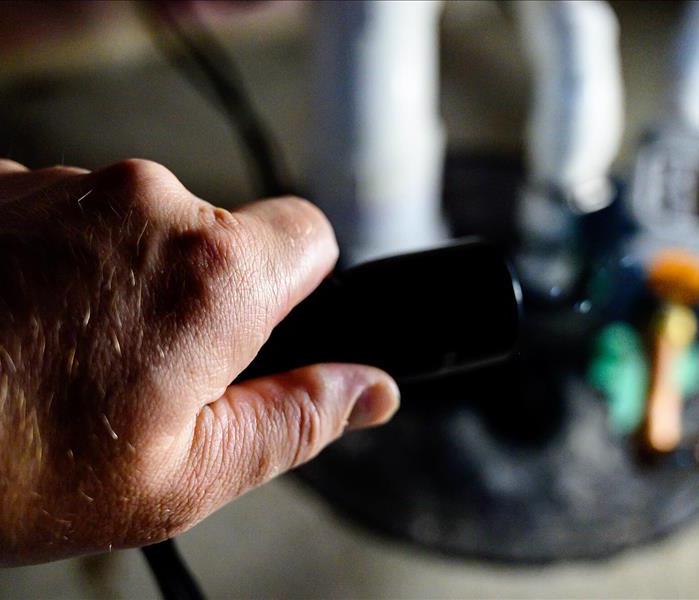 Sewer Backups and Home Owner's Insurance
Sewer Backups and Home Owner's Insurance
Home Insurance And Sewer Backups
A sewer backup can be an extremely messy problem for any homeowner in Gastonia, NC. To further complicate the situation, your home insurance policy may not cover cleanup and restoration costs, forcing you to fund repairs out-of-pocket. Carefully reviewing your current coverage may spare you considerable frustration in the long run.
Sewer Backups can be a Costly Problem
A sewage overflow inside your basement or bathroom is highly unsanitary and can cause significant destruction.
Depending on the specific cause of the backup and the extent of the damage, you may face numerous cleanup and repair requirements, such as the following:
- Disinfecting the contaminated area
- Removing saturated drywall and insulation
- Repairing broken sewage lines
- Replacing destroyed personal property
Without adequate home insurance coverage, these expenses can quickly mount and become extremely costly.
Potential Causes
A sewer backup often strikes unexpectedly. If your community’s storm water and sewer lines converge, your home may be particularly vulnerable, particularly if the area becomes inundated with rainwater that overwhelms the system.
If you are fortunate, you may notice subtle symptoms of a plumbing issue that may cause a sewage backup. Examples of specific signs include consistently slow-flowing drains and a lingering sewer gas odor. If you experience either situation, you may have a clogged or damaged pipe.
Contacting a licensed plumber may allow you to resolve the potential issue early, sparing you from a messy sewage cleanup.
Safeguarding Your Home
You can minimize your risk of clogged or broken sewage lines by planting trees and shrubs away from pipes and throwing diapers, feminine hygiene products, wipes and paper towels in the trash instead of your toilet. Installing a back-flow valve can also prevent sewage backups.
However, possibly the most efficient way to safeguard both your home and financial security is to update your home insurance policy to ensure you are adequately covered against a sewer backup. Insurance can be a valuable financial safety net, but insufficient coverage can be extremely costly.
If disaster strikes, having both your insurance company and a professional cleanup and restoration team on your side can make all the difference.
SERVPRO of Southern Gaston County can handle your water damage restoration and repair needs. For questions, contact us anytime 24/7.
Tips to Avoid Pipe Bursts
2/27/2019 (Permalink)
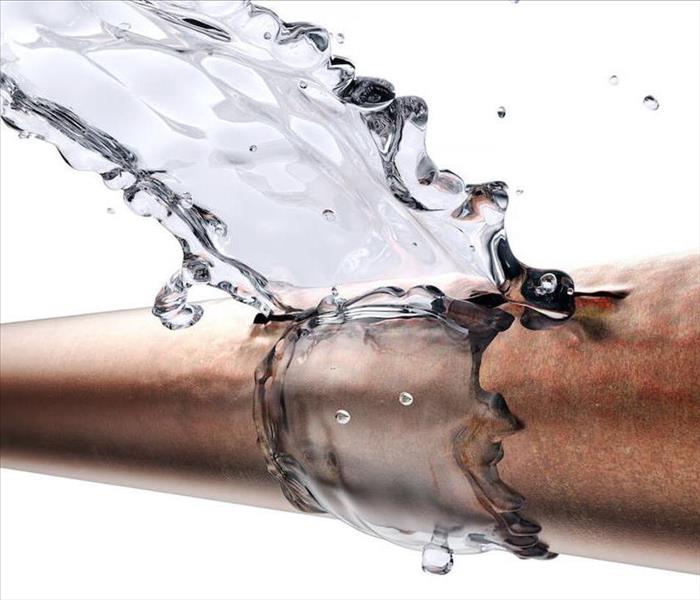 Tips to avoid pipe bursts
Tips to avoid pipe bursts
TIPS TO AVOID PIPE BURSTS
When temperatures drop in Charlotte NC, pipes can freeze. Freezing water expands and cold pipes contract. The result, pipe bursts and water damage. Follow these tips to keep your house safe this winter:
- Disconnect outdoor hoses & cover spigots with insulated covers
- Drain in-ground sprinkler systems
- Show family members where the water main is and how to shut it off
- Insulate pipes in unheated spaces
- Caulk around holes where pipes come through walls
- Stop cold air in your crawlspace by closing vents & sealing cracks
- When it drop below freezing, keep your faucets lightly dripping.
- Keep house temperatures above 55 & don’t turn it down before traveling
- Open cabinet doors so air can keep pipes warm
- Keep a light on in crawlspaces, attics & well houses





 24/7 Emergency Service
24/7 Emergency Service




















